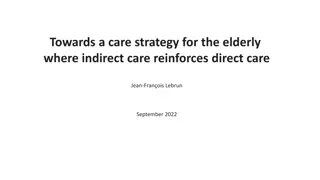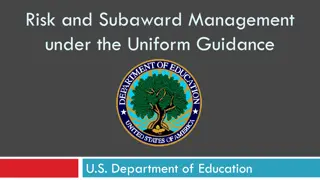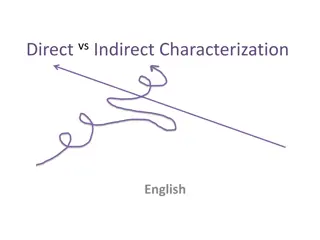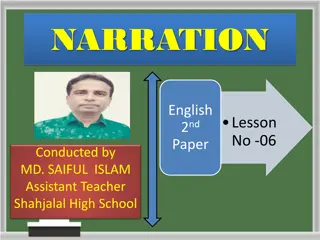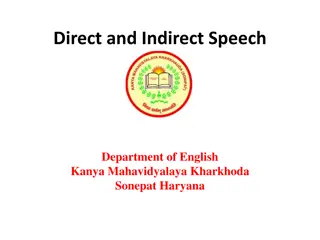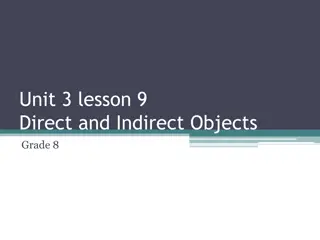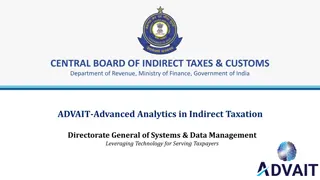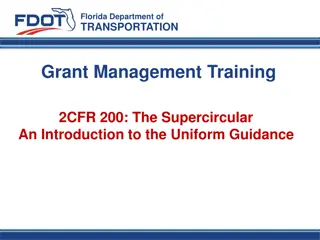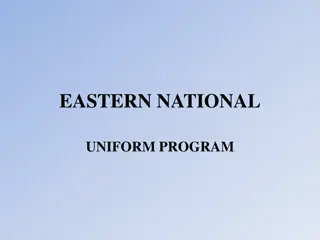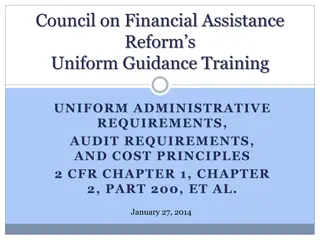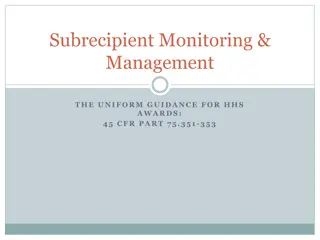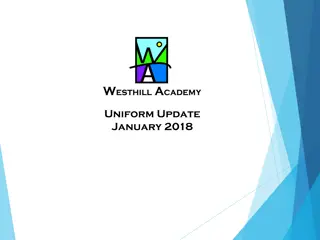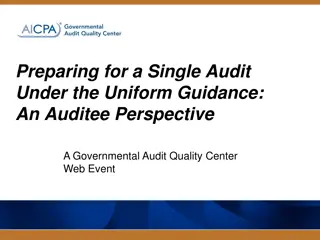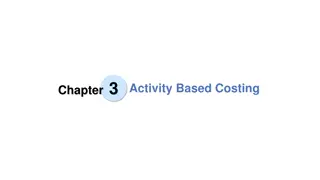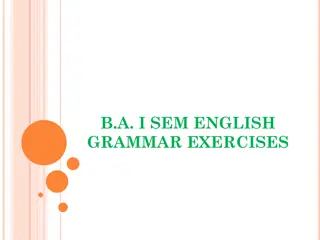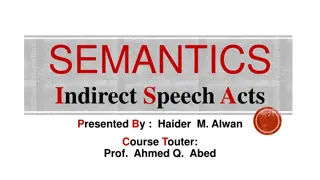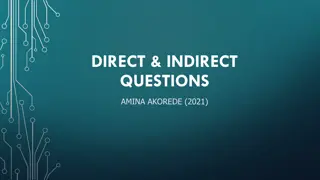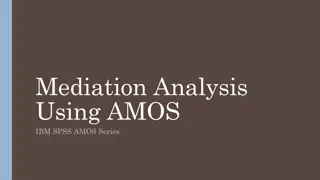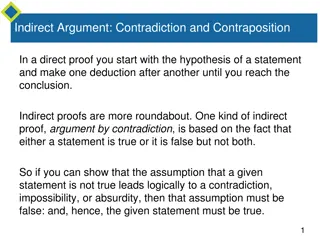Understanding Indirect Cost Concerns Under the Uniform Guidance
Overview of the indirect cost concerns under the Uniform Guidance issued by the U.S. Department of Education. The content covers the definition of indirect costs, typical expenditures, cognizant agency determination, and specific guidance for state and local education agencies. Important aspects such as indirect rates, cognizance duration, and approval processes are highlighted.
Download Presentation

Please find below an Image/Link to download the presentation.
The content on the website is provided AS IS for your information and personal use only. It may not be sold, licensed, or shared on other websites without obtaining consent from the author. Download presentation by click this link. If you encounter any issues during the download, it is possible that the publisher has removed the file from their server.
E N D
Presentation Transcript
Indirect Cost Concerns Under the Uniform Guidance U.S. Department of Education
Objectives Overview of Indirect Costs Key Changes Under the Uniform Guidance GAN Changes De Minimis Rate Grant Extensions Sub-Recipient Rates Timelines Time and Effort Changes 524 Budget Form Resources and Tools 2
What Are Indirect Costs? Costs that have been incurred for common or joint purposes. Costs that benefit entire organization, and cannot be specifically identified to one cost objective. An indirect rate ensures that each Federal agency providing funding picks up its fair share of indirect costs. 4
Typical Indirect Expenditures? Executive Costs Human Resources Payroll Personnel Utilities Finance (Accounting) Maintenance Please note: There are no costs that are exclusively indirect. 5
Cognizant Agency Determination The Federal agency with the largest dollar amount of direct Federal awards with an organization will be designated as the cognizant agency for indirect costs and for the negotiation and approval of the indirect cost rates and/or Cost Allocation Plans. 6
Specific Cognizance Guidance Unless there is a significant shift in dollar volume of the Federal awards to an entity, cognizance lasts: Three years for Non-Profits. See Appendix IV to Part 200 paragraph C. 2. a. Five years for State & Local Govts. See Appendix V. to Part 200 paragraph F.1. 7
Specific Cognizance Guidance Regarding State Education Agencies (SEAs) and Local Education Agencies (LEAs): 75.561 (b) and 76.561 (b) states: Each SEA on the basis of a plan approved by the Secretary (ED Indirect Cost Group), shall approve an indirect cost rate for each LEA that requests it to do so. These rates may be for periods longer than a year if rates are sufficiently stable to justify a longer period. EDGAR 8
Specific Cognizance Guidance Institutions of Higher Education (IHEs): See Appendix III to Part 200 paragraph C. 11 Regardless of dollar value, either HHS or DOD Office of Naval Research is cognizant for Colleges & Universities. Contingencies include: who provides the most funds for the most recent three years, types of research performed, etc. Must be mutually agreed to by both agencies. If neither agency provides Federal funding, cognizance defaults to HHS. Cognizance must continue for five years. 9
Methods of Proposal Submission In order for a grantee to claim indirect costs, it must submit either a(n): Indirect Cost Rate Proposal; or Cost Allocation Plan (CAP) 10
Indirect Cost Rate Proposal A non-Federal entity must prepare documentation to establish an indirect cost rate. Guidance Documents to prepare a proposal: Non-Profit - A Guide for Indirect Costs Determination (Labor Guide) Labor Guide State & Local -Cost Allocation Guide for State & Local Governments (ED Guide) Green Book 11
Cost Allocation Plan (CAP) Generally submitted in lieu of an indirect cost rate proposal. In certain situations, due to the nature of its Federal awards, grantees may be required to develop a cost allocation plan that distributes indirect and/or direct costs to specific funding sources. 12
Statewide Cost Allocation Plans (SWCAP) HHS is cognizant for all SWCAPs SWCAP is a part of indirect cost expenses that SEAs and State Agencies (SAs) propose. Costs allocated for central services at the state level include motor pools, computer centers, purchasing, accounting, etc. 13
Indirect Cost Rate Agreement An agreement signed by Federal agency head of Indirect Cost Office and an authorized representative of the non-federal entity; e.g. Commissioner, CEO, CFO, Comptroller, etc. This agreement establishes indirect cost rates for non-federal entities to utilize for administrative cost reimbursement. 14
Applicability to Programs Discretionary (D) & Formula (F) Grant Programs Unrestricted (Regular) (D & F) Restricted (D & F) Training (D) 15
Unrestricted (Regular) Programs Are usually those without any statutory, or regulatory limitations on indirect costs. 16
Restricted Programs are Unique to ED SUPPLEMENT NOT SUPPLANT - A statutory requirement that prohibits the use of federal funds to supplant non-federal funds. These programs require the use of a restricted indirect cost rate. Computed in accordance with 34 CFR 76.564-76.569. Adjustments to the unrestricted rate calculation are made and result in a lower rate to claim indirect cost reimbursement on restricted rate programs. 17
Training Programs 34 CFR 75.562 (c)(1) Used for grants that pay primarily for training. ED program officials determine whether a grant is a training grant. Examples: Tuition costs, stipends, etc. Maximum recovery 8% Modified Total Direct Cost (MTDC), or actual rate if lower. 200.68 MTDC defined at 2 CFR Grantee must document its actual rate is not lower than 8%. 18
Types of Indirect Rates Provisional/Final Fixed with Carryforward Predetermined 19
Types of Indirect Rates Provisional- a temporary indirect cost rate used for funding, interim reimbursement and reporting indirect costs on federal awards pending the establishment of a final rate for that period. Final- an indirect cost rate based on the actual allowable costs of the period. A final rate is not subject to adjustment. 20
Types of Indirect Rates Fixed with Carryforward guarantees the grantee will receive its actual costs. Primarily for State & Local Governments (SEAs, SAs, LEAs). An indirect cost rate calculated using the difference between estimated and actual costs of the period; (under or over-recovery) and carried forward as an adjustment to the rate computation of a subsequent period. 21
Types of Indirect Rates Predetermined Indirect rate applicable to a specified current or future period, based on an estimate of costs to be incurred. Barring unusual circumstance, not subject to adjustment. Timeframe: Ranges from two to four years. 22
Temporary Rate A grantee without a federally approved indirect cost rate can utilize a temporary rate of 10% of budgeted direct salaries and wages for grant application purposes. See EDGAR 34 CFR Part 75.560 (c). 23
Key Changes in Indirect Costs 200.210(a)(15) Federal awarding agency must include the Indirect cost rate on the Federal Award (Grant Award Notification (GAN)). 200.414(f) - Grantees that have never negotiated an indirect cost rate may use de minimis rate of 10% of MTDC 200.414(g) One-time extension of a current negotiated rate for a period of up to 4 years. 200.331(a)(4) Sub-recipients can use Federal rate agreement, negotiate a rate, or de minimis rate. 25
Grant Award Notification Changes The Uniform Guidance requires the indirect cost rate to be included on the Grant Award Notification. 2 CFR 210 Requires ED to include the indirect cost rate on GANs to its awardees. Additionally, if a grantee makes a subgrant, 2 CFR 331 requires the grantee to ensure that the indirect cost rate is on the subaward. 26
Eligibility to Use the De Minimis Rate This is a key flexibility to reduce burden for new grantees; however, please be aware that some programs/entities are restricted from using the de minimis rate: State and Local Governments Under 75.561 and 76.561 procedures, LEAs will receive their rates from the SEAs, based on a plan approved by the ICG. Restricted rate programs with statutory supplement not supplant provisions Training rate programs as defined under EDGAR 75.562 27
Rate Extension Up to Four Years New flexibility: Grantees with a current negotiated rate may apply for an extension of up to 4 years with Cognizant Indirect Cost Agency approval. 200.414(f) Reduces the requirement to negotiate annually Requests for extensions must be submitted 60 days prior to the due date for the indirect cost proposals. After extension period ends a new indirect proposal must be submitted and negotiated. Not applicable with Fixed with carryforward rates; grantees must switch to predetermined rate based on current proposal submission. 28
Sub-Recipient Indirect Rates Pass-through entities must list the approved federally recognized indirect cost rate on the GAN. If no such rate exists: A rate can be negotiated between the prime and sub- recipient. Sub-recipient can use de minimis rate if it has never had a federally negotiated rate. (refer to slide 27 for entities and programs not eligible for the de minimis rate). 29
Timelines 30
Timelines for Indirect Cost Indirect Cost requirements apply to the first fiscal year beginning after December 26, 2014. Work with your cognizant agency to ensure your indirect cost rate proposal reflects decisions appropriate for your program Example: The grantee fiscal year ends June 30, 2015. Your rate proposal is due 6 months after the end of the current fiscal year, due December 31, 2015. Requests for extensions must be submitted 60 days prior to the due date of proposal submission, or October 31, 2015 in this example. 31
Time and Effort Cognizant agency must approve substitute T&E systems. See 2 CFR 200.430 Compensation (i)(5) Substitute Systems for State & Local Government, and Indian Tribes parameters Strong system of Internal Controls; Substitute proposal with supporting documentation. Current Department guidance Letter to Chief State School Officers ED is reevaluating current guidance given additional flexibility. Contact ED staff for more information. (see slide 41) 32
Updated 524 Form (line 10) The 524 Budget Form is being updated to reflect the UG changes. Applicable to Discretionary Grants Detailed information at bottom of form. Applicant must indicate if Indirect Cost Rate Agreement was approved by the Federal government. 33
Updated 524 Form 1. Do you have an Indirect Cost Rate Agreement approved by the Federal government? ____Yes ____No. Applicable to Discretionary Grants 2. If yes, please provide the following information: Period Covered by the Indirect Cost Rate Agreement: From: ___/___/______ To: ___/___/______ (mm/dd/yyyy) Approving Federal agency: ____ED ____Other (please specify): __________________________ The Indirect Cost Rate is _________% 34
Updated 524 Form 3. If this is your first Federal grant, and you do not have an approved indirect cost rate agreement, are not a State, or Local government, and are not funded under a training rate program or a restricted rate program, do you want to use the de Minimis rate of 10% of MTDC? ____Yes ____No. If yes, you must comply with the requirements of 2 CFR 200.414(f). Applicable to Discretionary Grants 35
Updated 524 Form 4. If you do not have an approved indirect cost rate agreement, do you want to use the temporary rate of 10% of budgeted salaries and wages? ____Yes ____No. If yes, you must submit a proposed indirect cost rate agreement within 90 days after the date your grant is awarded, as required by 34 CFR 75.560. Applicable to Discretionary Grants 36
Updated 524 Form 5. For Restricted Rate Programs (check one) -- Are you using a restricted indirect cost rate that: Applicable to Discretionary Grants ___ Is included in your approved Indirect Cost Rate Agreement? Or ___ Complies with 34 CFR 76.564(c)(2)? The Restricted Indirect Cost Rate is _________% 37
Resources Cost Allocation Guide for State & Local Governments https://www2.ed.gov/about/offices/list/ocfo/fipao/guideigcwebsite.pdf A Guide for Indirect Costs Determination (Labor Guide) http://www.dol.gov/oasam/boc/DCD-2-CFR-Guid-Jan2015.pdf Indirect Cost Frequently Asked Questions (FAQs) http://www2.ed.gov/about/offices/list/ocfo/fipao/icgindex.html 39
Resources External homepage for applicants, grantees, and the general public http://www2.ed.gov/policy/fund/guid/uniform-guidance/index.html Email address for Uniform Guidance Questions UniformGrantGuidanceImplementation@ed.gov 40
ED Indirect Cost Group Contact Frances Outland, Director Office of the Chief Financial Officer Financial Improvement Operations Telephone (202) 245-8082 41




